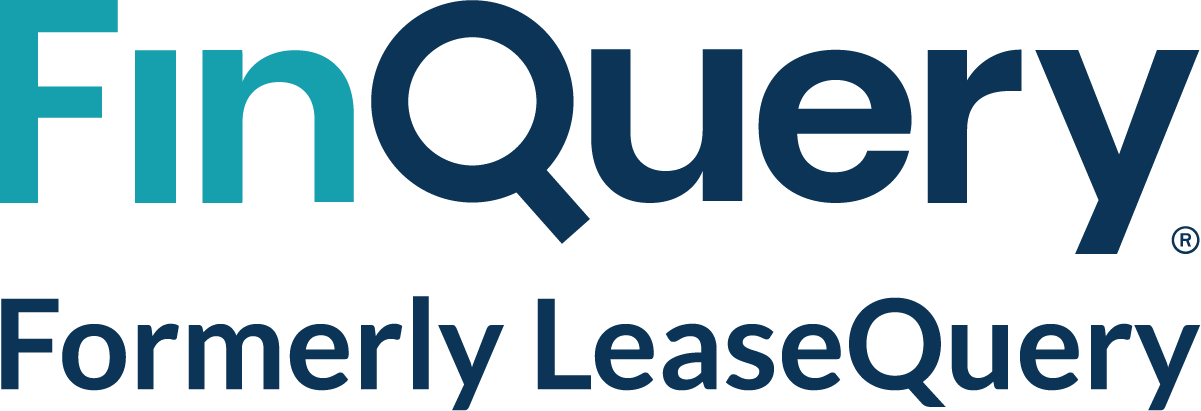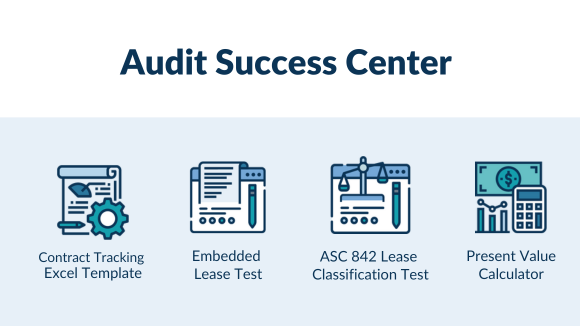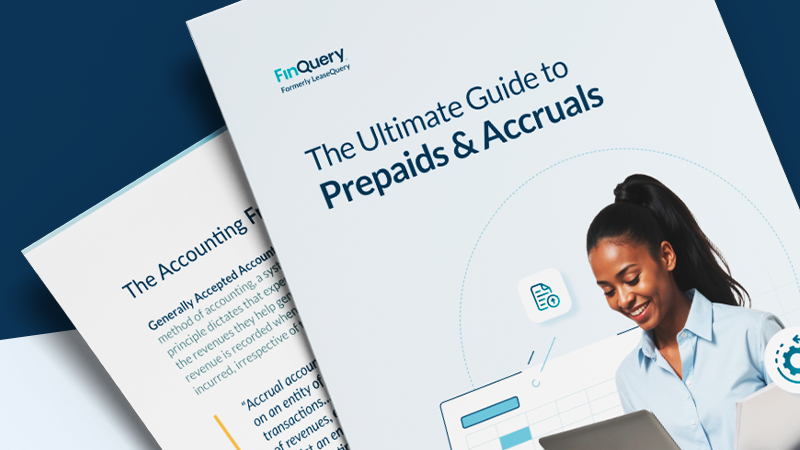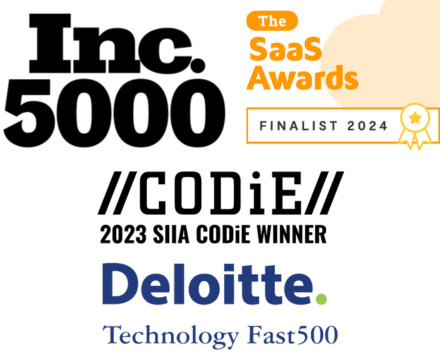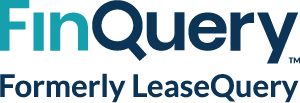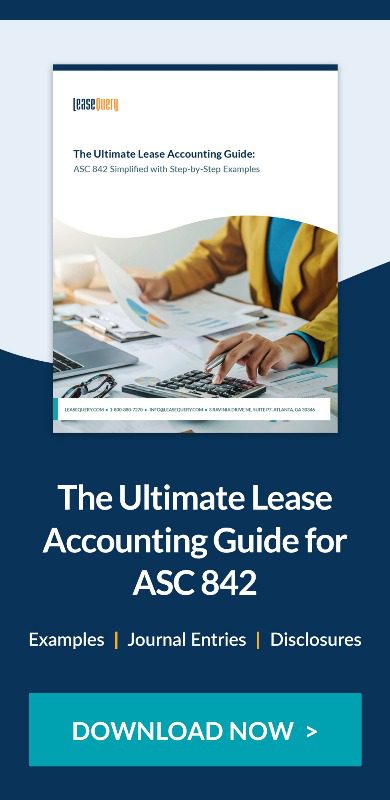ASC 842 is the comprehensive accounting guidance that covers how companies reporting under US GAAP account for leases. This standard requires both finance and operating leases to be recognized on the balance sheet, and includes various lease disclosures that we will discuss in this article.
A focus on quantitative disclosures for lessees
In this article, we’ll provide an overview of the new disclosures and also discuss the necessary supporting data that will need to be accumulated for your company’s annual disclosures.
The disclosure requirements for lessees include both qualitative and quantitative elements specifically:
- Discussion on the lease arrangements
- A description of significant judgments made in applying ASC 842 to the lease population
- Information about the operating and finance lease amounts recognized in the financial statements
Following is a discussion on the expanded quantitative disclosures.
Why software makes generating disclosures more accurate and efficient
Without assistance from a software, accumulating the supporting data for the quantitative lease disclosures can be a time consuming task. After compiling the necessary data and performing the required calculations, the company then has to validate the accuracy of the spreadsheet calculations for its internal control requirements and its auditors. Additionally, these calculations need to be updated on an ongoing basis for any modifications, lease additions, or terminations during each subsequent period.
Looking at quantitative disclosures in four “buckets”
The quantitative disclosures required under ASC 842 can be considered in four buckets – Lease Costs, Other Information, Weighted Averages, and Maturity Analysis.
Lease costs
Lease costs are the total costs attributable to entering into a lease agreement – otherwise known as the expense. This is the sum of the fixed and variable considerations within a lease contract. ASC 842 requires separate disclosures of operating and finance lease expense, and also disclosure of lease expense for companies that have elected the practical expedient to account for short-term leases off-balance sheet as a straight-line expense, adhering to previous ASC 840 accounting requirements.
To the extent that a company’s lease agreements include variable lease expense, the annual cost should be disclosed. And, if a company has entered into any sub-lease arrangements, the income on these arrangements should be disclosed. The net of these transactions results in annual consolidated lease cost.
ASC 842 includes an example to illustrate the full quantitative disclosure requirements.
This is an excerpt of the portion related to lease cost:
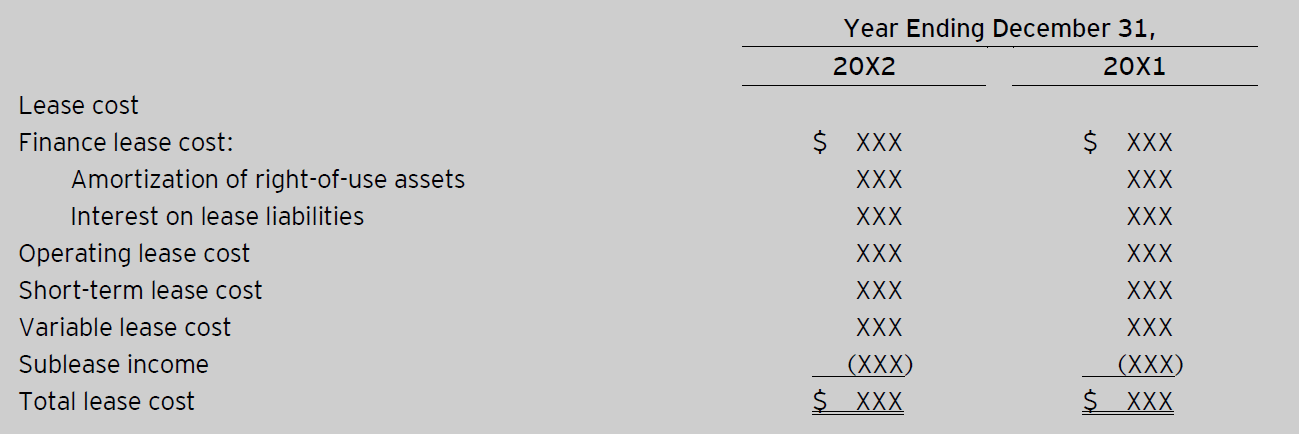
Other information
Other information disclosures required by ASC 842 include cash flow and supplemental non-cash information related to lease liabilities. This information is included to facilitate an investor’s understanding of the cash flows and operations of the business. Additionally, ASC 842 requires a lessee to disclose cash paid for amounts included in the measurement of lease liabilities, segregated between operating and financing cash flows. This translates into a requirement to disclose the operating cash flows for all finance and operating leases, as well as the financing cash flows for finance leases.
For each operating lease, lessees will disclose operating cash flows as the sum of the liability reduction recognized over the 12-month period—which is the difference between the cash the lessee pays and the expense recognized. For each finance lease, lessees will disclose financing cash flows as the sum of the liability reduction booked over the 12 month period. The lease expense recognized during the reporting period for the finance lease will also be disclosed as the financing cash flows from finance leases.
ASC 842 requires a lessee to also disclose supplemental non-cash information about finance and operating lease liabilities arising from obtaining right-of-use (ROU) assets.
To the extent that a company has entered into sale leaseback transactions, the gain/loss from this transaction must be calculated by the company and presented in the lease footnote.
This is an excerpt from the guidance:

Weighted averages
Weighted averages may be the most difficult and confusing disclosure to capture under ASC 842. As such, companies will find it very helpful to choose a reliable software provider that can calculate the disclosure accurately and efficiently. The provider must also understand the accounting behind the calculations driving the disclosures, should assistance be needed.
ASC 842 indicates that a lessee should calculate the weighted-average remaining lease term for both operating and finance leases based on the remaining lease term and the lease liability balance for each lease as of the reporting date.
A lessee will need to follow these three steps to calculate this disclosure:
- Collect the lease liability balance and the remaining lease term for each lease at year-end.
- Multiply each lease liability balance by the corresponding remaining lease term.
- This amount is then divided by the sum of the lease liability at year-end to arrive at the weighted-average remaining lease term for both operating and finance leases, respectively.
ASC 842 requires the lessee to calculate the weighted-average discount rate based on the discount rate used to calculate the lease liability balance and the remaining balance of the lease payments for each lease as of the reporting date.
A lessee will need to follow these two steps to calculate this disclosure:
- On a lease-by-lease basis, multiply the remaining payments by the discount rate.
- This amount is divided by the sum of remaining payments for the operating or finance leases, resulting in the weighted-average discount rate for each type of lease.
This is an excerpt from the guidance:

Maturity analysis
The maturity analysis requirement is an annual projection of the undiscounted cash flows over a five-year period and all remaining years after that for both operating and finance leases.
This is an excerpt from the ASC 842 guidance on the requirements for the maturity analysis disclosure:

Here is an example of how the maturity analysis might be presented for ASC 842 using lease accounting software (in this case LeaseQuery powered by FinQuery):
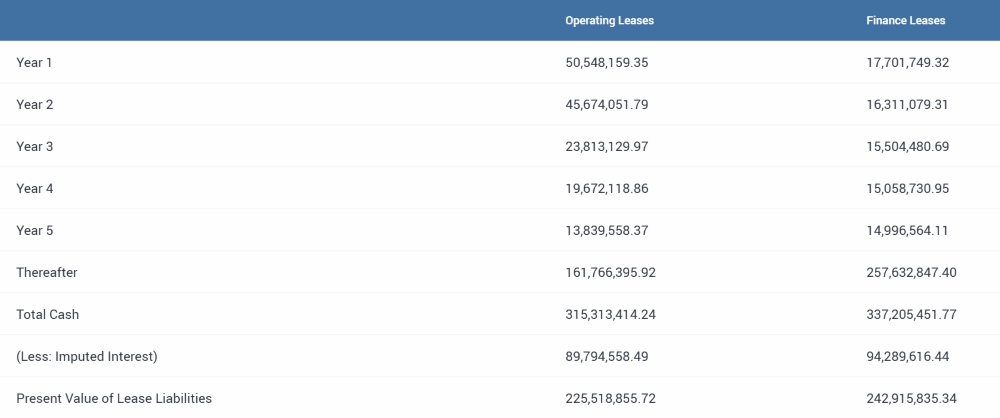
Summary
Using lease accounting software will facilitate the preparation of a company’s lease disclosures and ensure the accuracy of the information disclosed. This will allow the company to focus its efforts on the qualitative requirements of the disclosure: descriptions of its leases, features of lease arrangements such as variable lease payments, and residual value guarantees, and its accounting policies with regards to discount rates, lease and non-lease elements, and short-term leases.
